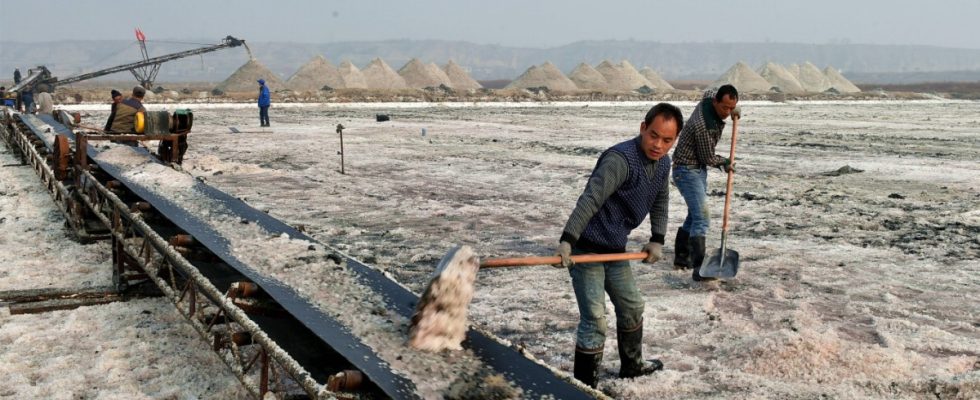For example magnesium. The vital mineral is hidden everywhere on earth, in sea water and in the soil and in plant parts, and it is essential for the production of aluminum. However, 97 percent of the EU’s demand currently comes from China, where more magnesium is mined than anywhere else in the world. This is just one of many worrying dependencies that a new EU law is intended to reduce: In record-breaking time, the member states met with representatives of the EU Parliament and the Commission on Monday evening to a compromise agreed on the law for critical raw materials.
The regulation aims to extract and recycle a larger proportion of critical raw materials within the EU in the future and to increasingly process them locally. The “Critical Raw Materials Act”, which the EU Commission only presented in mid-March, is intended to promote all of this at the same time. The law is one of the EU’s most important geoeconomic projects, a reaction to the energy crisis and the high dependence on raw material imports as well as to the EU’s subsidy race with the USA and China. And it is a striking example of the EU’s increased industrial policy approach, which is reflected in target values and quotas in legal texts.
“Industrial policy blueprint for a secure and sustainable supply of raw materials”
The core of the rules is one List now includes 34 critical raw materials (including 17 “strategic” raw materials) that are needed for the energy and transport transition or in the construction sector and agriculture. These include rare earth metals, lithium and cobalt, but also natural rubber, coking coal and magnesium. By the end of the decade, ten percent of these raw materials should be mined within the EU, 40 percent of their further processing should take place on domestic soil and 25 percent of the annual requirement should come from recycling. And in the future, a maximum of 65 percent of a raw material should be allowed to come from a single country in order to reduce dependencies.
The compromise is the last major project of former federal politician Nicola Beer (FDP) in the EU Parliament before she moves to the Presidium of the European Investment Bank next year. “With targeted economic incentives, we create real planning security for private investors,” said Beer, “for example through central contact points for companies and quick and simple approval procedures with clear deadlines for national authorities.” The agreement is “an industrial policy blueprint for the secure and sustainable supply of raw materials in Europe”.
27 months from application to approval
The co-legislators in Brussels are also acting against the backdrop of rapidly increasing needs. By 2030, the Commission estimates that the EU will need twelve times as many lithium batteries for electric cars and electricity storage. According to the authority, the demand for rare earths, which currently comes almost exclusively from China, will increase five to six times over the same period. “If Europe does not act, it risks supply shortages and unwanted dependencies,” said Commission Vice President Thierry Breton.
In order to achieve the quota requirements, strategic projects for the extraction of raw materials should be approved more quickly in the future. Instead of the up to 15 years it takes from discovery to dismantling, a maximum of 27 months should be sufficient in the future. For recycling and processing plants, the deadline will now be 15 months. Both are at the expense of the environmental assessment, which is included in these deadlines apart from the preparation of an initial impact report. A stress test is also planned every three years in order to identify possible problems in supply chains at an early stage. Member States should also maintain reserves of some critical raw materials.
Before the agreement reached on Monday becomes law and can come into force, the EU Parliament and the Council of Ministers still have to approve it. This is usually considered a formality.

